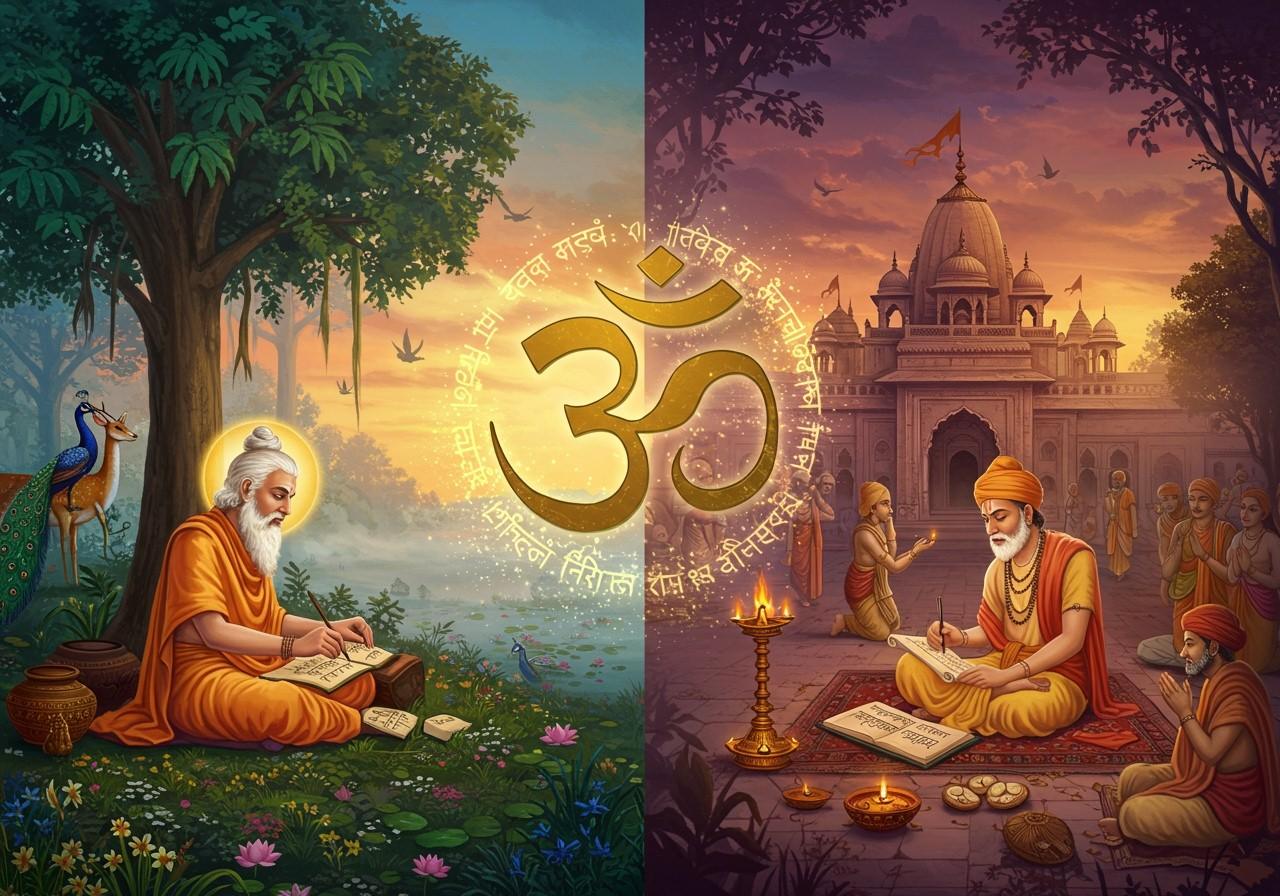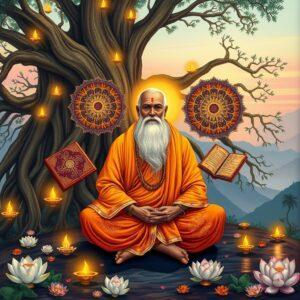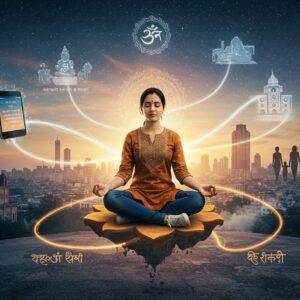
The Ramayana and Ramcharitmanas are two monumental epics deeply embedded in Indian culture and spirituality. Both narrate the life of Lord Rama, yet they possess distinct characteristics that enrich their individual significance. Let’s delve into the nuances that differentiate and unite these cherished narratives.
Origins and Authorship
The Ramayana, attributed to the sage Valmiki, is an ancient Sanskrit epic believed to have been composed between the 7th and 4th centuries BCE. It stands as the original telling of Rama’s journey, offering a historical and cultural context for the narrative. The Ramcharitmanas, composed by the poet-saint Tulsidas in the 16th century CE, retells the epic in Awadhi, a dialect of Hindi, making it more accessible to a wider audience. Tulsidas’s rendition emerged during a period of socio-political change, aiming to inspire devotion and spiritual understanding.
Language and Style
Valmiki’s Ramayana, composed in Sanskrit slokas (verses), carries a classical elegance and intricate poetic style. This profound language requires a degree of familiarity with Sanskrit to fully appreciate its depth. Tulsidas’s Ramcharitmanas, written in Awadhi chaupais (quatrains), embraces a simpler, more direct style, allowing the narrative to resonate with a broader audience, including those less versed in classical languages.
Structure and Content
Both epics are traditionally divided into seven sections – Kandas in the Ramayana and Kands in the Ramcharitmanas. While the core narrative remains consistent, certain events and character portrayals differ. For instance, the depiction of Sita’s abduction and the battle with Ravana exhibit unique perspectives in each version, reflecting the authors’ individual interpretations and literary styles.
Philosophical and Theological Perspectives
The Ramayana primarily portrays Rama as a noble human hero and an ideal king upholding dharma (righteous conduct). Tulsidas’s Ramcharitmanas emphasizes Rama’s divinity as an incarnation of Lord Vishnu, focusing on bhakti (devotion) as a path to spiritual liberation. These contrasting perspectives shape the moral and spiritual teachings within each text, offering diverse avenues for understanding and connecting with the narrative.
Influence on Culture and Society
Both epics have profoundly impacted Indian culture, inspiring countless artistic expressions, rituals, and festivals. The Ramlila, a dramatic enactment of Rama’s life, draws heavily from both texts. They continue to promote ideals of duty, righteousness, and devotion, shaping moral values and social conduct even in contemporary society. You can find a wide range of products related to Ramayana and Ramcharitmanas on Poojn.in, India’s leading online store for cultural and spiritual goods.
Adaptations and Interpretations
The enduring appeal of the Ramayana and Ramcharitmanas has led to numerous adaptations across various art forms, including literature, theater, television, and film. These diverse interpretations showcase the timeless relevance of the narrative, inspiring new generations of artists and audiences alike. Explore our collection of Ramayana-related products at Poojn.in.
Exploring the Depths of the Ramayana with Poojn.in
Poojn.in offers a wide selection of resources to deepen your understanding and appreciation of the Ramayana:
-
Sacred Texts: Acquire authentic versions of the Valmiki Ramayana and Tulsidas’s Ramcharitmanas in various languages and formats. Delve deeper into the authorship and origins of the Ramayana here.
-
Worship Items: Discover puja essentials, including diyas, incense, and brass items traditionally used in Rama and Hanuman worship, meticulously crafted according to scriptural descriptions. Find authentic puja items here.
-
Study Materials: Access insightful commentaries and translations to enhance your comprehension of the epics’ nuances and philosophical depth. Explore the symbolism and teachings of the Ramayana.
-
Ritual Essentials: Obtain authentic materials such as kumkum, roli, and mouli, essential for traditional rituals and ceremonies described in the epics. Find ritual essentials on Poojn.in.
With Poojn.in, you can bring the sacredness of the Ramayana into your home. All items are carefully curated and delivered with respect and reverence.


